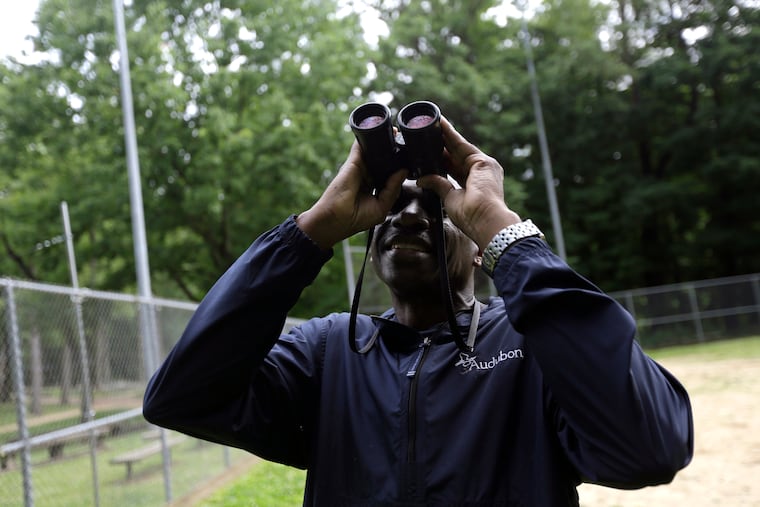How to fund public parks and wild places in Pennsylvania
Our state’s most precious resources — land, water, and air — are under threat and deserve better investment.

Over the past few pandemic-era years, millions of Pennsylvanians have found comfort and strength in our public parks and wild places. We walked, fished, paddled, and bird watched, enjoying the beauty that abounds in our state. And yet, even as more and more of us enjoy the outdoors, those natural places are under threat.
Changes in our state’s climate have made natural areas more vulnerable. Warmer temperatures lead to deforestation. More frequent rain storms cause flooding and erosion of river and stream banks. Invasive plants grow more rapidly and crowd out native trees and flowers. Ironically, our own increased use of the commonwealth’s parks, refuges, and trails has put additional pressure on the biodiversity that our ecosystems need.
Against this backdrop, Gov. Tom Wolf has proposed that $500 million in federal recovery funds be invested in Pennsylvania’s two most important assets: our land and water. Growing Greener III, which has the support of Republicans and Democrats in the state legislature (SB 525 and HB 2020), will fund conservation efforts throughout the commonwealth and ensure Pennsylvanians that our treasured wild places will continue to exist in future years and for future generations.
These investments will help create and improve healthier habitats across the state, augmenting important volunteer efforts to remove litter from favorite parks, maintain hiking trails, remove invasive plants, and take part in bird and wildlife counts. Treasured landscapes — ranging from state parks in the Laurel Highlands to Philadelphia’s Fairmount Park system — serve as buffers against climate change, helping to store carbon, keep our water clean, and filter contaminants out of the air.
What is particularly exciting is that Growing Greener III would use nature itself to heal our land and water. These “natural infrastructure” projects will include planting trees and other vegetation alongside streams to prevent erosion and create shade to keep waters cool. Freshwater mussels can be introduced to filter water. Natural solutions also include using forests to store carbon and creating successional healthy forests made up of a diverse mix of tree species that promote biodiversity while cleaning the air and mitigating against a warming climate.
Within the more than 13,500 square miles of the Delaware River Watershed — from which more than 13 million people get their drinking water — Audubon has installed native trees and plants along stream banks. In Philadelphia, we have worked to restore the Whitby Meadow in Cobbs Creek Park, which not only sustains migrating birds but has also created a beautiful new space for neighbors to enjoy.
Healthy ecosystems allow birds such as the wood thrush, blue herons, eagles, and warblers to find food and places to nest and stopover on their long migratory journeys. Pennsylvania’s Kittatinny Ridge is a migratory “super highway” for birds such as northern goshawks and cerulean warblers. To preserve this vital resource, Audubon Mid-Atlantic has partnered with the Pennsylvania Department of Conservation and Natural Resources, the Nature Conservancy, local land trusts, elected officials, landowners, and scientists to design and implement a sustainable landscape management plan for the 185-mile-long Kittatinny Ridge. Together, we seek to protect globally important bird areas, preserve and create habitat, and promote healthy forest management.
» READ MORE: To get action on climate change, change the subject
We also know that dynamic and beautiful habitats support people. These investments in wild spaces contribute to local economies, bringing in recreational and ecotourism dollars and supporting businesses large and small — hotels, restaurants, grocery stores, outfitters — that cater to these visitors. Further funding will boost the state’s thriving outdoor and tourism industry in every corner of Pennsylvania, supporting strong local economies.
There has never been a better time for Pennsylvania to make the important conservation investments. The bipartisan legislation to support Gov. Wolf’s budget is currently being debated in Harrisburg. I urge Pennsylvania’s elected leaders to prioritize our treasured landscapes with the unique opportunity that these federal funds bring.
Pennsylvania’s streams, forests, birds, wildlife, and people will benefit from a network of dynamic, biodiverse, and accessible green spaces that we can all enjoy — no matter where in the commonwealth we call home.
Suzanne Biemiller is the executive director of Audubon Mid-Atlantic and vice president of the National Audubon Society.